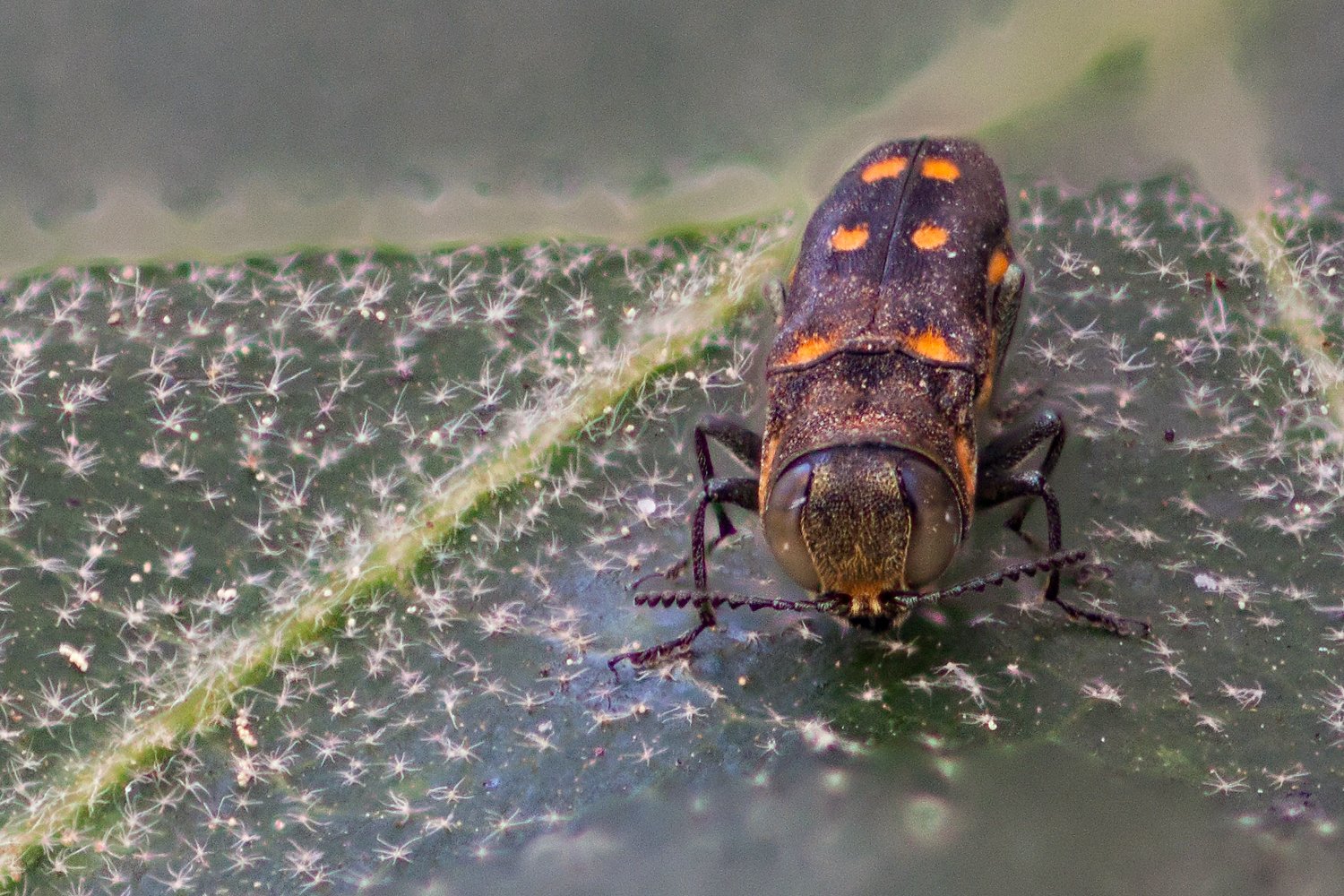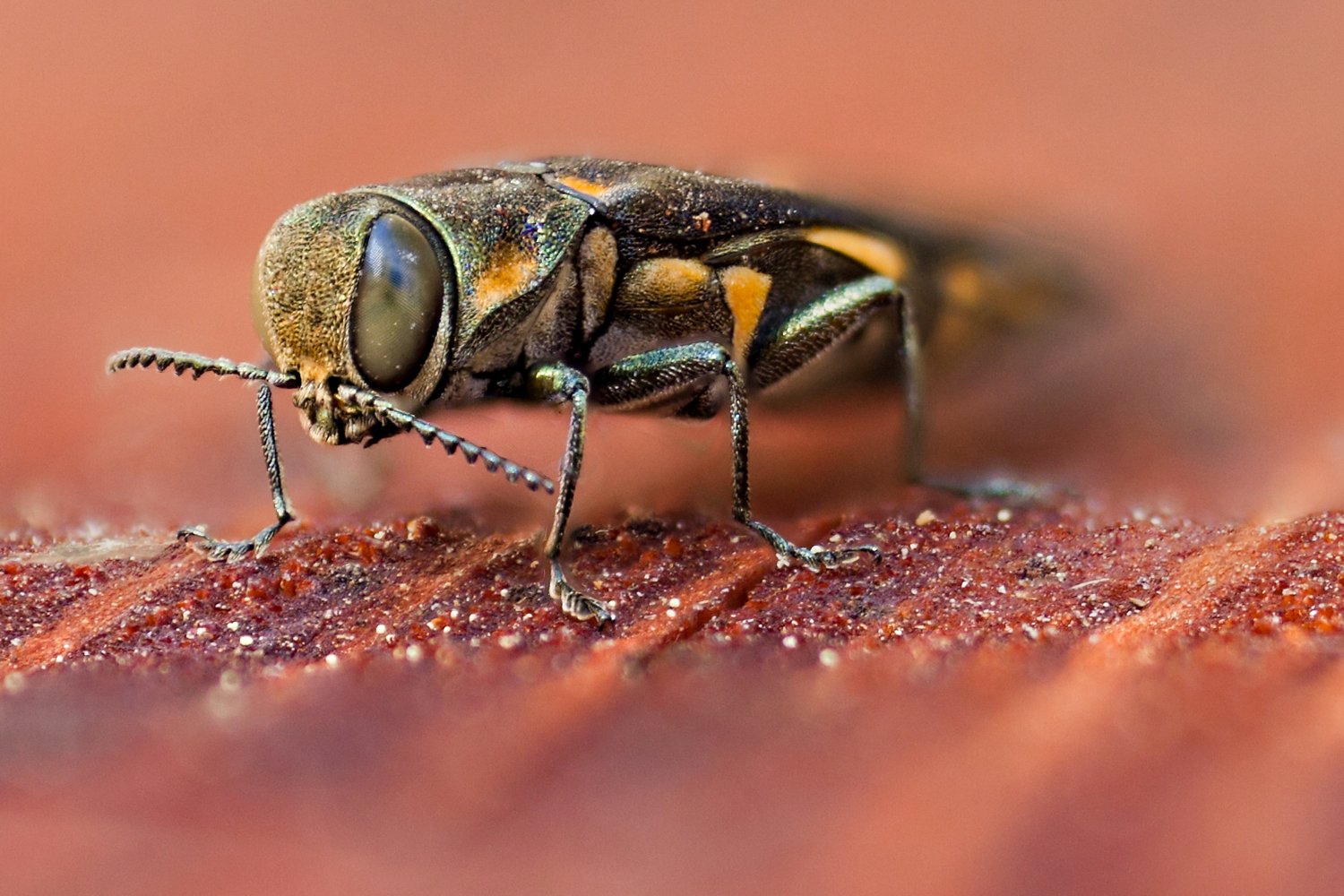Gather ‘round for the spooky tale…of the Goldspotted Oak Borer.
It was the early 2000s in San Diego, and out of nowhere drought-stressed oak trees began dying of mysterious causes. Soon, scientists realized the enemy was within the trees—eating them alive from the inside out. A yellow-spotted pest that was nearly invisible to the human eye. But where did these little parasites come from?

The answer is firewood. Native to oak forests of Southeastern Arizona, the goldspotted oak borer (GSOB) had hitched a ride into a campground in Cleveland National Forest in Southern California, by hiding under the bark of an unknowing camper’s kindling. Since their arrival, they have killed over 80,000 oaks—and they have the potential to spread further, taking down hundreds of thousands more oaks in their wake.
As scary as invasive pests like GSOB are, they aren’t evil—they’re just in a habitat that they’re out of balance with. There are theories about why GSOB’s impact is neutral in its native range in Arizona, but devastating to our California oaks. The fact of the matter is, GSOB evolved elsewhere, under different conditions, with different trees that experience different weather patterns.
These bugs unknowingly hitched a ride to a new home that they are harming just by living the way they always have. The situation feels a bit fraught, right? We’re past the point of getting rid of GSOB, and how would we teach a bug to change its way of life?
But we are not powerless. We have the power to educate ourselves and others by examining the impact we make as humans. We’re going to alter every environment we set foot in to some degree, but by learning about the balance that exists there we can learn to live more harmoniously.
Here are a few things you can do to keep GSOB out of your forests:
1. Burn it where you buy it.
Don’t move firewood. Even taking a few logs from one town to another can be too far. Buy seasoned and debarked firewood, to avoid spreading GSOB as well as other pests and pathogens. Check out dontmovefirewood.org to learn more about how to find firewood near you.
2. Watch out for the trees near you.
Good mulching practices can go a long way, and that practice can be as simple as leaving the leaves that a tree drops underneath the tree, and keeping debris away from the trunk.
3. Participate in citizen science.
A local GSOB infestation was discovered by an iNaturalist user, who took a picture of an unusual bug and asked other users to identify it.
4. Volunteer with TreePeople.
GSOB has already started impacting our local forests. As scientists continue their work to understand this invasive pest, we are working hard to plant new oak trees to replace the ones we’ve lost. Sign up for one of our oak restoration volunteer events to do your part!

